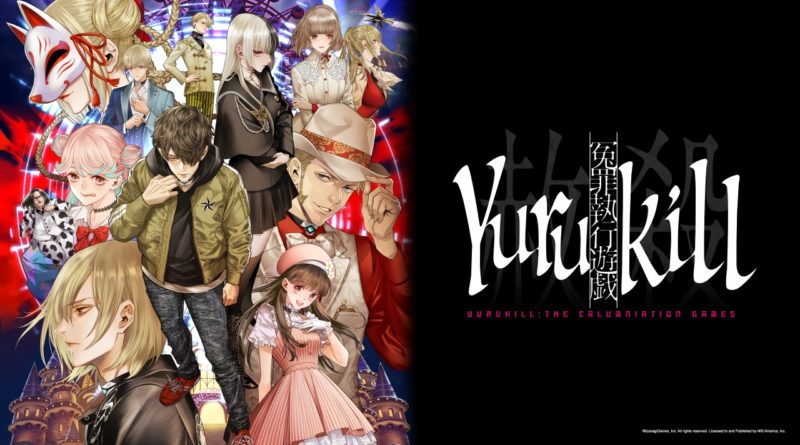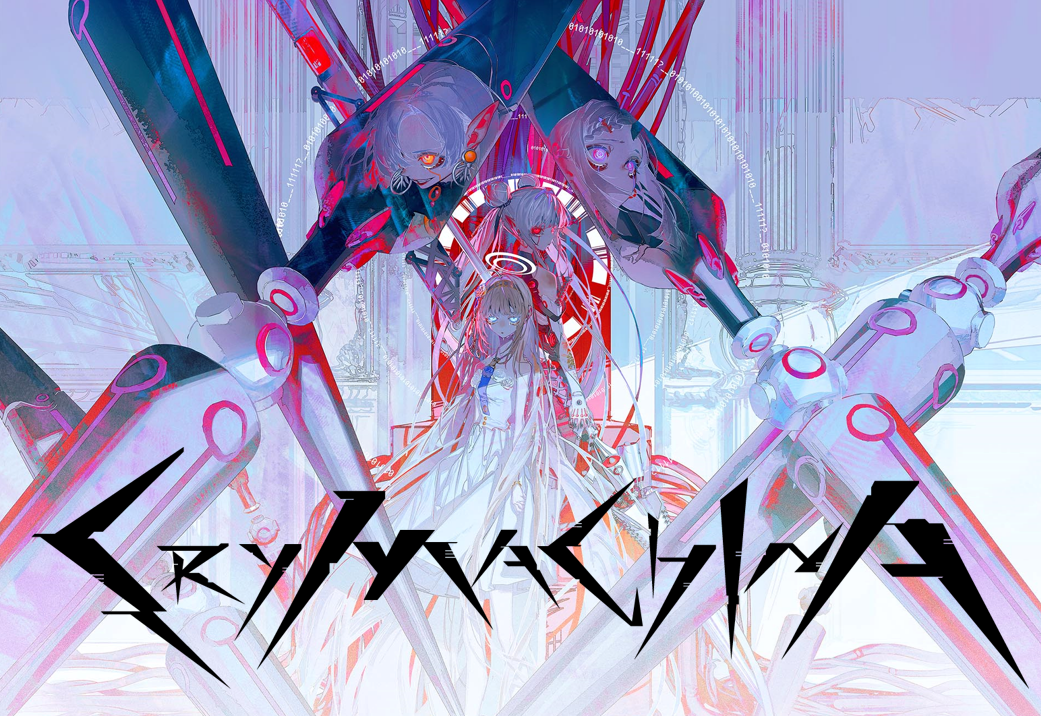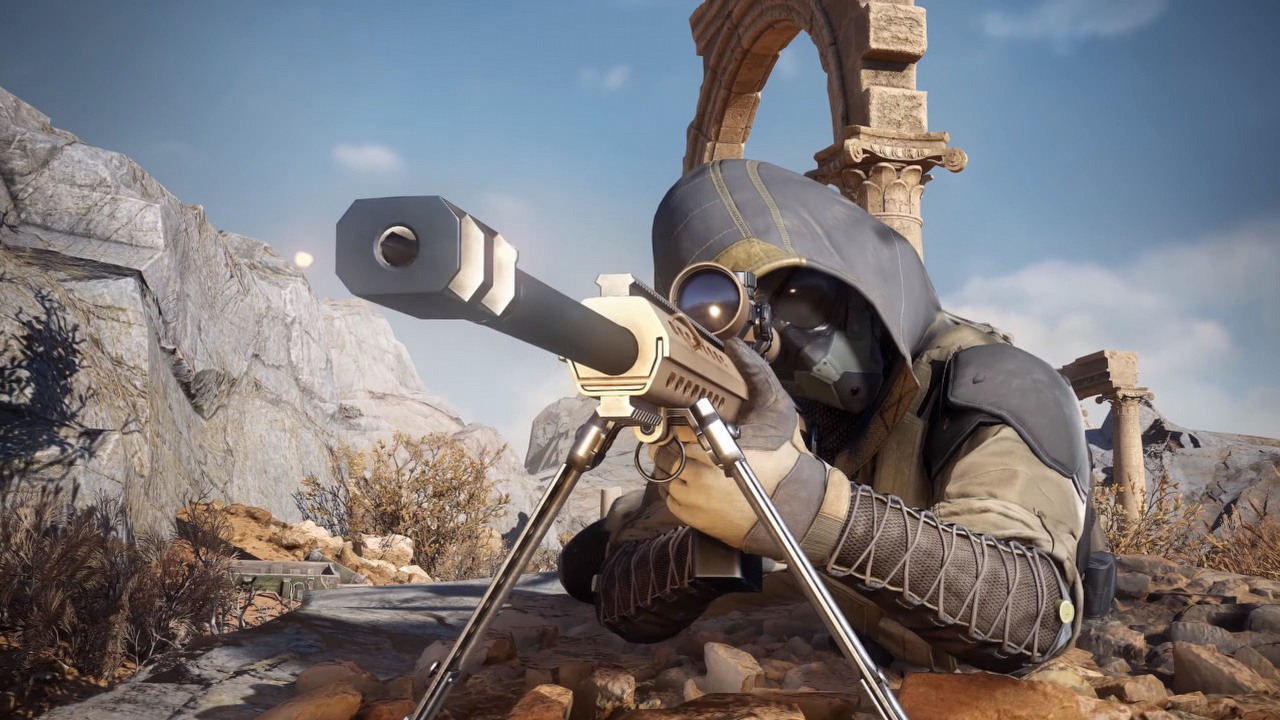Yurukill: The Calumniation Games Review (PS5) – Forgive and Let Live
Combining elements of visual novels, adventure games and shmups, Yurukill promises a relatively unique experience. Does it deliver? The Finger Guns Review:
I don’t know about you, but I had no idea what “calumniation” meant when I was given Yurukill: The Calumniation Games for review, so I’ll go ahead and define it. Calumniation is the act of making false or defamatory statements about someone. Yurukill itself is a portmanteau of the Japanese words for “pardon” and “kill”. The game’s title defines the basis for the story in Yurukill: A group of prisoners claiming to have been falsely accused of their crimes find themselves waking up on a ship bound for Yurukill Island, host to a massive theme park. They’re told by their mysterious and eccentric host Binko that if they can survive the coming trials, one of them will receive a pardon for their crimes, regardless of their innocence. It’s worth noting that the criminal justice system in Japan is strict, and acquittals are rare, so this is these characters’ only chance at potential freedom.
As a new entry in the “death-game” genre, Yurukill: The Calumniation Games definitely interested me. It’s a genre I’m already fond of, but that’s not the main reason it caught my attention; that’s down to the second genre it throws into the mix. Typically other games in the genre, like the Danganronpa or Nonary Games franchises, will primarily feature visual novel style storytelling with some light adventure game or puzzle elements. Yurukill features these elements, but it also has you playing through bullet hell shmup sections at the end of each chapter. I’m not someone who plays shmups, with my only real exposure to bullet-hell style gameplay being in the Nier franchise, but the mix was enough to get my attention and see how the game blends the two. But before I delve into the shmup sections, I need to give some more context about Yurukill’s story.

A Solid Premise, Sloppily Delivered
As previously mentioned, Yurukill follows a group of supposedly innocent prisoners trying to claim their freedom, but there’s a second aspect. Each “Prisoner” is paired up with another person, who the game calls an “Executioner”, and they are split into 5 teams. These Executioners have been directly affected by the crime that the Prisoner was found to be guilty of. This instantly creates an opportunity for conflict within the groups, and the very idea of this excited me. However, I felt the game did very little with it, and any dramatic payoffs that could arise often never came up or were glossed over. There were two or three moments in the story where characters learn a truth about the other that led to some of the better dramatic moments, but honestly, the story left a lot to be desired. In each of the first four chapters, you must convince the Executioner to not hit the “Kill” button on the device they’re given in the game’s opening. These may sound like a great way to inject some stakes, but in reality, it’s just four different dialogue choices: Pick wrong, die instantly. The answers are all fairly obvious, and the mechanic felt a little half-baked. The voice acting in the game, however, did help to make those few dramatic moments of the story more impactful. I’m someone who will always pick an English dub for a game if given the option, purely because I tend to get distracted in cutscenes and will miss important information, but Yurukill only has a Japanese voice-over. I didn’t find it a problem, however, as you can advance the dialogue line by line. The voice actress for Yurukill’s host, Binko, was a particular stand-out, jumping between 5 or 6 voices and tones of voice and was clearly giving her all.
One of my biggest problems with Yurukill was I found its story structure kind of messy. It’s split into 7 chapters, but the first four have you following a separate group, with intermissions in between giving a glimpse at the fifth group’s progress. While each of these first four chapters gives you a look at each of the characters, 2 through 4 ultimately felt superfluous. The rest of the story focuses on the team from the first chapter, and the events of Chapters 2, 3 and 4 don’t really make a difference to the rest of Yurukill’s plot. Also, each team is put into an individual challenge, separating the group for more than half of the game, meaning we don’t get to see these teams interact for a sizeable chunk of its runtime. This also leads to the narrative feeling somewhat disconnected, and there’s no real intrigue or moments where the game gives you hints on what’s really going on. It’s not until the game’s closing moments that we get a smidge of something behind the scenes and a reason for this all happening, but then it’s over. A side effect of having you play as 4 different teams in the first half of the game is that you keep getting the same game mechanics explained to you multiple times. I get that in the story, each team wouldn’t know how those mechanics work, but it’s annoying being told the same thing repeatedly.
If it feels like I’ve come across negatively about Yurukill’s story, it’s because there was such a great setup established in the opening. It’s the execution and follow-through that the game disappointed me. The characters are all pretty interesting; I just wanted to see them interacting as a group more than I did. It’s not that Yurukill is poorly written; it’s more that its pacing felt off. It also didn’t help that a late-game reveal meant to be a grand revelation fell flat because a character’s name is an anagram of a different Japanese word. Wordplay like that is relatively common in games from Japan, but it doesn’t work as a plot reveal when translated into English. I hope this team can come together and make another story in this world because it’s full of potential, and there’s a lovely little epilogue that I really enjoyed.
Puzzles Aplenty
Regarding Yurukill’s gameplay, each chapter will have you solving escape room-esque puzzle sections to progress. There’s a solid variety to these puzzles, and they’re, for the most part, relatively well designed and explained. There were a couple of times I found myself questioning how to solve them, and while the game has a hint system to nudge you towards the solution, sometimes they’re still not very clear. You’ll also have any relevant clues for the puzzle you’ve found shown in the bottom corner for you to look over, but I found some of them to be hard to read due to their size. You may occasionally even need to look through the dialogue history as sometimes you’ll be told vital information before the puzzle that won’t be repeated in the hints you’re given. There was one instance of what I found to be a pretty massive leap of logic that had me genuinely frustrated when I stumbled on the answer. It involved a bloody knife, a handshake and the assumption that all people shake with their dominant hand as inarguable proof of a person’s innocence. As someone who is left-handed but shakes with their right, I think I actually called bullshit out loud at my TV.

At the end of these puzzle sections, the Prisoner will face “Yurukill Judgement”. This is where the shmup sections come into play. The Prisoner and Executioner will be placed into “Brain Reality”, a VR-like simulation that your brain perceives as reality, therefore in real danger of death. Each chapter ends with one of these sections, each consisting of three rounds. As I said previously, I’m not someone who plays shmups, but the game accounts for this. At the start of the game, you can choose between 3 difficulties: Easy, Normal, and Hell. The game recommends Easy if you aren’t familiar with shmups, with the subsequent modes being for experienced or advanced players. It’s worth noting that you cannot raise the difficulty once you’ve begun, but you can lower it if you picked a mode beyond your ability. I will say, Easy doesn’t make it a total breeze; you still have to engage and can still lose, but the difficulty is significantly lower. I never got a game over, but when I tried the first shmup level in the game’s score attack mode, I found the difficulty jumped significantly, and I was going through lives fast.
There are a handful of little mechanics within these shmup sections beyond just the standard bullet hell gameplay. At the start of each level, you’ll be quizzed on things you’ve learnt in that chapter, with each correct answer granting you extra lives. By defeating enemies, you can collect pickups that fill your Outburst Gauge, allowing you to use more powerful attacks. In Easy and Normal difficulties, if you’re hit by a projectile and have 20% of your Outburst Gauge filled, you’ll automatically detonate a bomb that protects you and destroys all projectiles around you, creating a brief area of safety. There are also multiple ships you pilot throughout the game. There’s one for each of the teams, and they each have a different playstyle. You’re locked into which ship you pilot in each chapter, but once you’ve unlocked them in the story mode, you can play as any of them in the Score Attack mode, which allows for a lot of replayability. There are even online leaderboards!
Boss Fight for Your Right (To Parley!)
At the end of each round, you’ll face off against your Executioner in a boss fight. It’s worth mentioning that each of these designs is great, and the backgrounds of the levels are thematically tied to each chapter’s plot.

During these boss fights, you’ll have to break through your Executioner’s prejudices, giving evidence from a choice of 5 options that proves your innocence and shakes their beliefs. Choose wrong, and you’ll lose 3 lives. In the final round’s boss fight, you’ll have to navigate a “Mind Maze”, recalling all the information you’ve collected to prove your innocence and convincing your Executioner to pardon you. It sounds more interesting than it is, boiling down to another set of multiple-choice questions with obvious answers. Even though I found some of these mechanics a little underwhelming, it’s still nice to see a developer trying to add little extra something. If a sequel does happen, I hope they tighten these mechanics up because the formula is good: it’s just not quite there yet.
As much as the unique aspects of its design drew me in, I do feel like Yurukill’s blending of adventure/puzzle mechanics with shmup sections could create an issue for potential buyers, however. If you’re someone who has trouble with even Easy mode, you’ll hit a wall, and the game just can’t continue. Conversely, If you’re a fan of shmups and just want to play that part of the game, you can’t; you must complete each chapter to unlock the next shmup level in score attack mode. It’s not a negative part game, just something worth pointing out for potential buyers.
It’s by no means a bad game, but Yurukill just never manages to hit the same heights as its contemporaries. There’s solid groundwork here for a sequel, it has its unique selling point in the shmup sections, and the puzzles are mostly fun. I wanted to love it, but its story didn’t come together in a satisfying way and too many mechanics felt half-baked or redundant.

Yurukill: The Calumniation Games releases on PlayStation 4, PlayStation 5 (reviewed) Nintendo Switch and PC on July 8th.
Developer: IzanagiGames Inc. and G.Rev
Publisher: NIS America
Disclaimer: In order to complete this review, we were provided with a promotional copy of the game. For our full review policy, please go here.
If you enjoyed this article or any more of our content, please consider our Patreon.
Make sure to follow Finger Guns on our social channels –Twitter, Facebook, Twitch, Spotify or Apple Podcasts – to keep up to date on our news, reviews and features.



